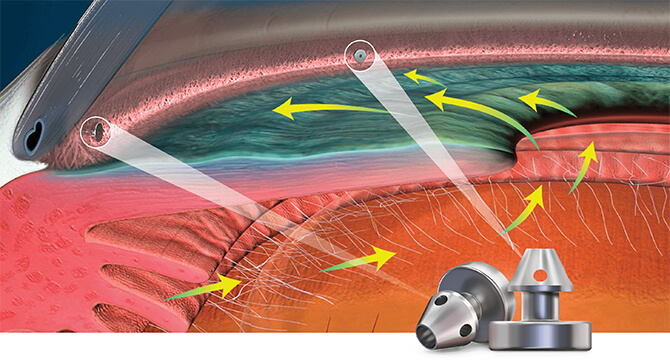Glaucoma – MIGS
- Home
- Glaucoma – MIGS
Micro-Invasive Glaucoma Surgery
MIGS stands for Micro-Invasive Glaucoma Surgery (sometimes called Minimally Invasive Glaucoma Surgery).
MIGS represents a significant advance in the surgical treatment of glaucoma. These procedures are designed to reduce the pressure inside the eye (intraocular pressure or IOP) with less surgical trauma, faster recovery, and a lower risk of complications compared to traditional glaucoma surgeries like trabeculectomy.

Key Features of MIGS
Minimally Invasive: They involve tiny incisions and microscopic-sized equipment or implants.
Safety Profile: They generally have a very good safety profile and reduced risk of complications (like excessive low eye pressure or bleeding).
Target: They aim to improve the eye’s natural fluid drainage system (aqueous humor outflow) or reduce the production of fluid.
Best for: They are typically used for patients with mild to moderate open-angle glaucoma, and are often performed in conjunction with cataract surgery.
Categories and Examples of MIGS Procedures
MIGS procedures are generally categorized based on how they lower the eye pressure:
| Category | How it Works | Examples of Devices/Procedures |
| Enhancing Trabecular Outflow | Bypassing or removing the blockages in the trabecular meshwork (the eye’s natural drain) to increase fluid flow into Schlemm’s canal. | iStent, Hydrus Microstent (Bypass stents), Kahook Dual Blade Goniotomy, Trabectome (Tissue removal) |
| Increasing Suprachoroidal Outflow | Creating a pathway for fluid to drain into the suprachoroidal space (the space between the retina and the wall of the eye). | Cypass Micro-Stent (though many older suprachoroidal shunts have been withdrawn) |
| Subconjunctival Filtration | Shunting fluid from inside the eye to a space under the conjunctiva (the clear covering on the white of the eye), similar to traditional surgery but with a micro-shunt. | XEN Gel Stent |
| Reducing Aqueous Production | Using a laser to partially ablate the ciliary body, which is responsible for producing the aqueous humor. | Endocyclophotocoagulation (ECP) |
Your ophthalmologist will determine which MIGS procedure, if any, is appropriate for your specific type and stage of glaucoma.








